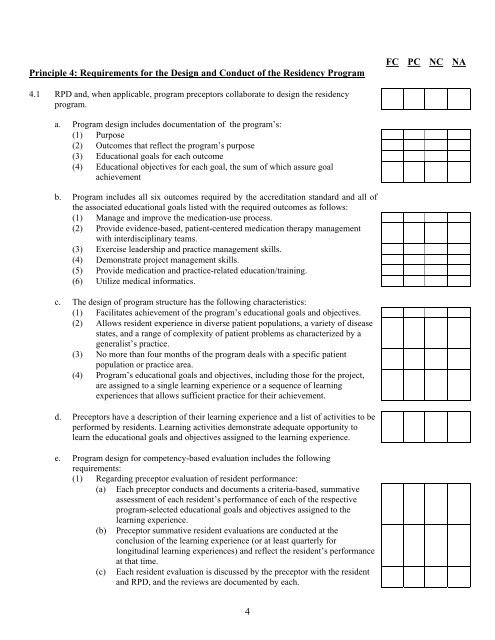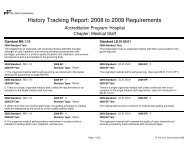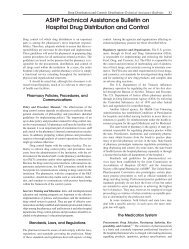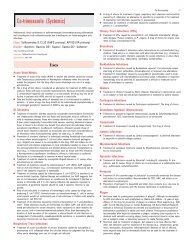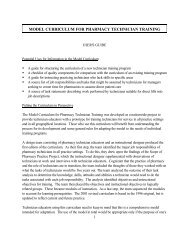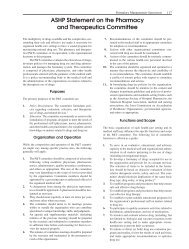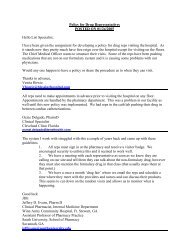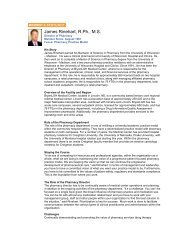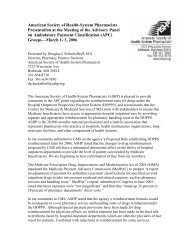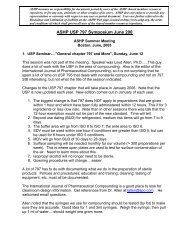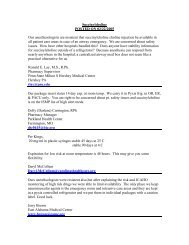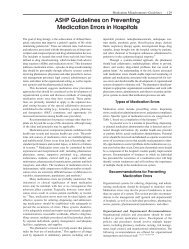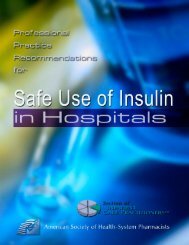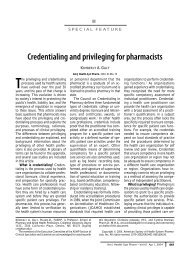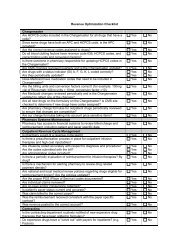pre-survey questionnaire and self-assessment checklist for ...
pre-survey questionnaire and self-assessment checklist for ...
pre-survey questionnaire and self-assessment checklist for ...
Create successful ePaper yourself
Turn your PDF publications into a flip-book with our unique Google optimized e-Paper software.
Principle 4: Requirements <strong>for</strong> the Design <strong>and</strong> Conduct of the Residency Program<br />
FC PC NC NA<br />
4.1 RPD <strong>and</strong>, when applicable, program <strong>pre</strong>ceptors collaborate to design the residency<br />
program.<br />
a. Program design includes documentation of the program’s:<br />
(1) Purpose<br />
(2) Outcomes that reflect the program’s purpose<br />
(3) Educational goals <strong>for</strong> each outcome<br />
(4) Educational objectives <strong>for</strong> each goal, the sum of which assure goal<br />
achievement<br />
b. Program includes all six outcomes required by the accreditation st<strong>and</strong>ard <strong>and</strong> all of<br />
the associated educational goals listed with the required outcomes as follows:<br />
(1) Manage <strong>and</strong> improve the medication-use process.<br />
(2) Provide evidence-based, patient-centered medication therapy management<br />
with interdisciplinary teams.<br />
(3) Exercise leadership <strong>and</strong> practice management skills.<br />
(4) Demonstrate project management skills.<br />
(5) Provide medication <strong>and</strong> practice-related education/training.<br />
(6) Utilize medical in<strong>for</strong>matics.<br />
c. The design of program structure has the following characteristics:<br />
(1) Facilitates achievement of the program’s educational goals <strong>and</strong> objectives.<br />
(2) Allows resident experience in diverse patient populations, a variety of disease<br />
states, <strong>and</strong> a range of complexity of patient problems as characterized by a<br />
generalist’s practice.<br />
(3) No more than four months of the program deals with a specific patient<br />
population or practice area.<br />
(4) Program’s educational goals <strong>and</strong> objectives, including those <strong>for</strong> the project,<br />
are assigned to a single learning experience or a sequence of learning<br />
experiences that allows sufficient practice <strong>for</strong> their achievement.<br />
d. Preceptors have a description of their learning experience <strong>and</strong> a list of activities to be<br />
per<strong>for</strong>med by residents. Learning activities demonstrate adequate opportunity to<br />
learn the educational goals <strong>and</strong> objectives assigned to the learning experience.<br />
e. Program design <strong>for</strong> competency-based evaluation includes the following<br />
requirements:<br />
(1) Regarding <strong>pre</strong>ceptor evaluation of resident per<strong>for</strong>mance:<br />
(a) Each <strong>pre</strong>ceptor conducts <strong>and</strong> documents a criteria-based, summative<br />
<strong>assessment</strong> of each resident’s per<strong>for</strong>mance of each of the respective<br />
program-selected educational goals <strong>and</strong> objectives assigned to the<br />
learning experience.<br />
(b) Preceptor summative resident evaluations are conducted at the<br />
conclusion of the learning experience (or at least quarterly <strong>for</strong><br />
longitudinal learning experiences) <strong>and</strong> reflect the resident’s per<strong>for</strong>mance<br />
at that time.<br />
(c) Each resident evaluation is discussed by the <strong>pre</strong>ceptor with the resident<br />
<strong>and</strong> RPD, <strong>and</strong> the reviews are documented by each.<br />
4


